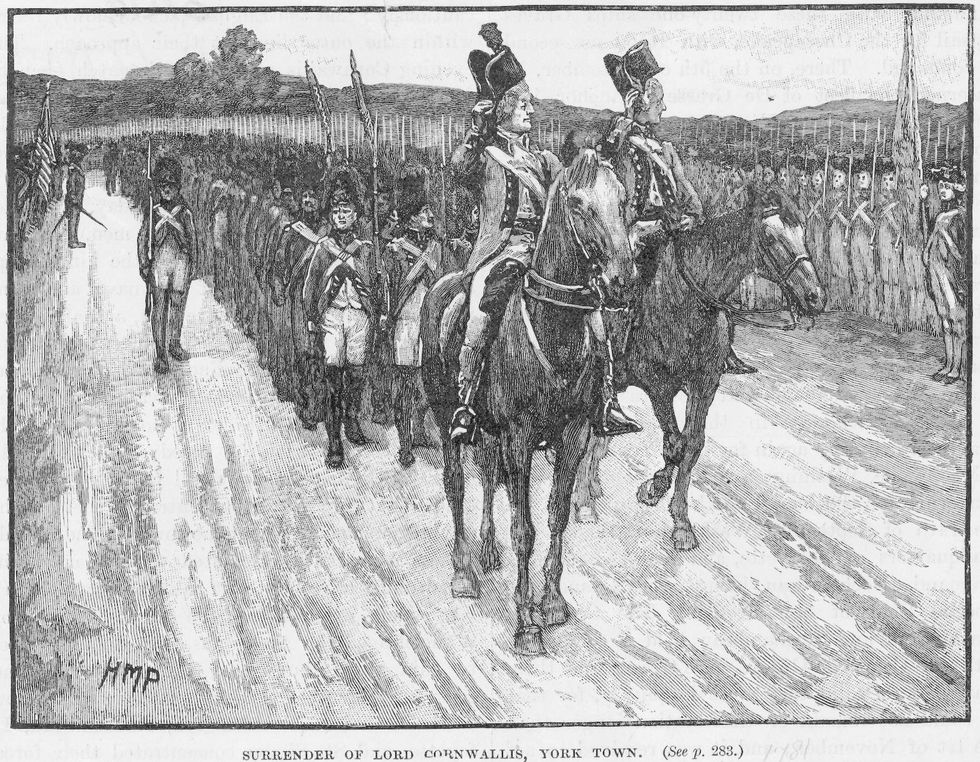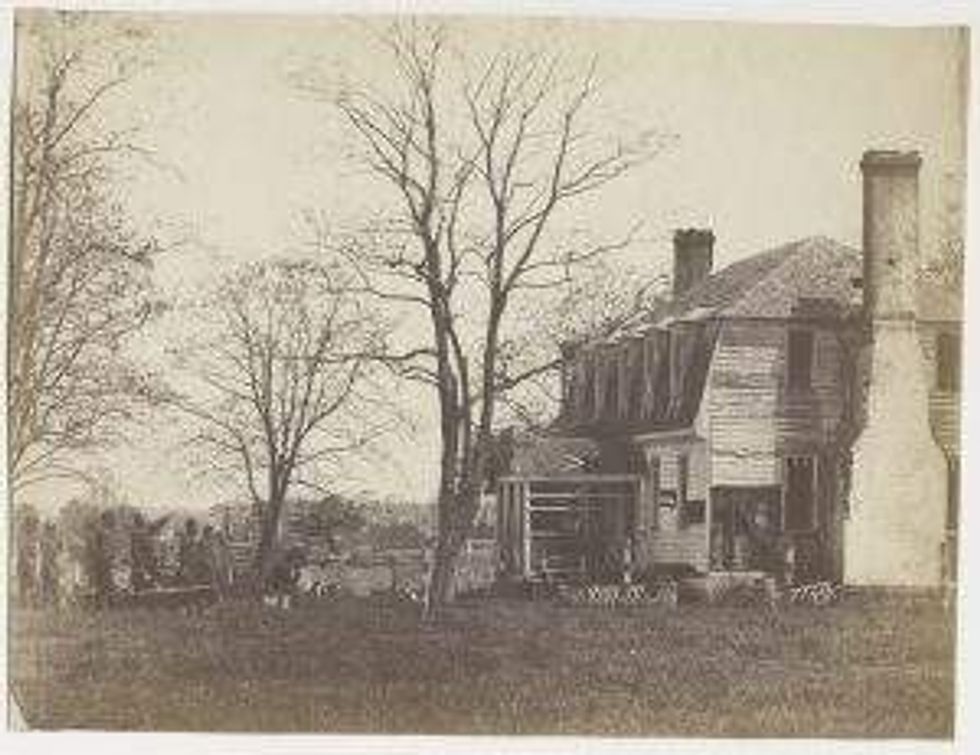
In 1781, Lord Charles Cornwallis and the British surrendered to Gen. George Washington at Yorktown, Virginia. The surrender effectively ended the American War of Independence. (Hulton Archive/Getty Images)

YORKTOWN, VIRGINIA (OCTOBER 19, 1781) — After nearly a month of intense battle, Lt. Gen. Charles Cornwallis, commander of the British forces in the southern theater, signed a formal agreement of British surrender today, ending the Battle of Yorktown.
The surrender, which was overseen by Gen. George Washington, marked the end of the bloody battle, which had raged on since September. Washington and Cornwallis began surrender negotiations on Oct. 17 at the Moore House.

Lord Cornwallis did not attend the actual signing of surrender, citing an illness, and sent his second-in-command, Gen. Charles O’Hara, to the ceremony. There, O’Hara carried Cornwallis’ sword to American and French commanders.
In all, Cornwallis surrendered nearly 8,000 men and seamen, more than 100 cannons and more than a dozen ships. As British troops marched out to surrender, a band reportedly played the song, "The World Turned Upside Down."
The decisive Continental victory has boosted American morale and many hope it will be the final major battle of the war as American delegates have already begun to discuss what negotiations with the British to formally surrender the war may look like.
The American victory came more than five years after America declared its independence from King George III on July 4, 1776.
The battle began late last month after Gen. Washington with the help of the Marquis de Lafayette, the Count de Rochambeau and the Count de Grasse were able to surround Cornwallis’ weathered troops in southern Virginia.
Count de Grasse was able to win a sea victory in early September, defeating the British Navy and preventing them from providing Cornwallis with supplies and reinforcements. That, along with thousands of French reinforcements and Washington’s battle-tested troops, proved too much to overcome for Cornwallis.
According to initial reports, 200 to 300 British troops were killed in the battle while an unknown number were wounded when taken prisoner. Less than 100 French and Continental troops were killed, while it is estimated that just over 300 were wounded.
It is reported that a British ship carrying 7,000 men was on its way to provide aid to Cornwallis, but that ship never arrived, potentially because of the French Navy’s command of the Chesapeake Bay.